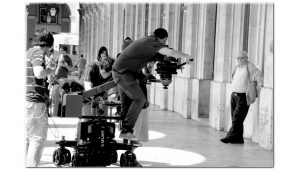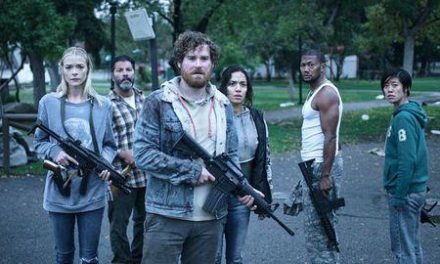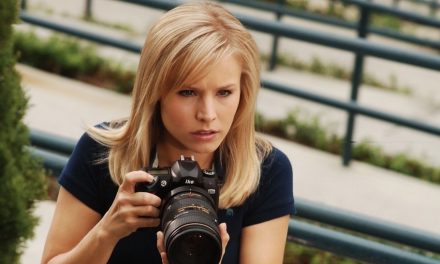For several years, I have watched the development of film and television education in Europe. I have looked at it from different angles, either as a scholar, a researcher or an employer of graduates from different schools. As a scholar, I have been privileged to contact many colleagues from other European countries interested in some of the same aspects of television that have always fascinated me. As a member of ECREA’s Television studies section, I have watched how research and reflections on the medium have flourished, how the eternal question of what television is and what it is becoming is being tackled from many different angles, and the historical and contemporary relevance of television as a producer and vehicle of representations that mold our society, assessed in different manners.
As a member of GEECT/CILECT (the European and International Associations of Film and Television Schools), I have witnessed these schools’ efforts to cope with technological transformations and a changing production and consumption environment, in order to assure the high standards of education that characterise these schools’ artistically driven education models. Many of the scholars I have interact with take a more social sciences-driven approach to the teaching of television, regarding the critical appreciation of the medium, its content and social implications, as the core object their teaching must deal with. Quite differently, most of the teachers in film and television schools that have emerged out of the “conservatoire” tradition, follow an auteur and practitioner-based approach, that relies on the experimentation of technical and creative skills as one of its main assets.
As an employer, I can attest to how difficult it is for schools to define curriculum and didactic approaches that, not only meet students’ expectations, but also adhere to the multiple evaluation and accreditation requisites in place in most European Countries. At the same time, these schools also have to assure that the programmes at stake fulfill the holy grail of providing students with the competences potential employers expect them to have. All this, not only in the short term, but also in the long term. One must agree, this is a complex task!
 Teaching television though implies we not only convince our students to interrogate what television is today and how the medium’s different cultural, social and technological dimensions are being reshaped, but we also provide them with the creative skills and critical thinking abilities necessary for them to strive professionally. Television is an object changing at a constant pace, a fact that implies we academics constantly adapt the theories and methods we use to understand that object, while at the same time rethink the competences that are needed in order to creatively explore the potential of the medium.
Teaching television though implies we not only convince our students to interrogate what television is today and how the medium’s different cultural, social and technological dimensions are being reshaped, but we also provide them with the creative skills and critical thinking abilities necessary for them to strive professionally. Television is an object changing at a constant pace, a fact that implies we academics constantly adapt the theories and methods we use to understand that object, while at the same time rethink the competences that are needed in order to creatively explore the potential of the medium.
Questioning given associations or determinisms is one of the best things we can do as teachers. However, this sometimes collides with external requests for the definition of clearer learning outcomes or the provision of content grounded in one specific discipline or tradition. Such requests, often the result of regulators or “market” pressure, diminish the potential for cross-disciplinarity, something I believe to be fundamental in the case of television teaching, namely considering the fluid nature of the contemporary media landscape. Only via cross-disciplinary teaching practices can we understand the manifold dimensions that signal what television is becoming.
All these aspects point to some of the problems and dilemmas we face when discussing television teaching. The first one is precisely the “what”. An agreement on what are we talking of when talking of teaching television is not as easy as one might think. In my view this difficulty points to one of the main difficulties television teaching must deal with. I am referring to the supposed gap between practitioners and theory driven scholars. There are many explanations for this gap, the simplest one probably being the highly granular nature of our academia. In a world made of “silos”, we all tend to stick to our areas of competences in search of legitimisation and safer areas of intervention. This is probably why the “what” is so important and at the same time such a complex question. If the object our teaching deals with is one in transition, a technology of many social dimensions going through a myriad of disruptions, then all teaching must clearly be supported in research efforts that can shed light on those processes and help the teacher in defining the content of its teaching. But those same transformations also entail a number of industry- or market-led aspects that many times, although not admittedly, drive the teaching models of the more craft- and skills-oriented schools that focus on responding to those needs.
And all this seems to be irreconcilable. The concerns that drive screen studies scholars seem to fall outside of the realms of the interest of practitioners. Practitioners dealing with artistic and creative skills don’t find the space in their curricula for the critical thinking social sciences wants to promote and, in the middle of all this, they don’t even agree on what we are talking of when we are teaching television.
Even those that follow a more skills-oriented approach do not agree on what they are talking of. It is a fact that there are important philosophical differences between different forms of television and screen media practice-led education. We have already said that the fact some programmes are highly oriented towards professional education, with an emphasis on the industry, whereas other programmes are oriented towards the individual student and promotion of the artistic or experimental approaches, results in different understandings of the object of teaching in itself – the “what” are they dealing with. Although tensions exist between those trained under the traditional apprenticeship system and those educated formally in production, that diminish in my view the overall ability of the field of television teaching and research to develop itself and find routes of articulation with the more research-based approach promoted by many television studies programmes. This is still truer, when we consider that the traditional apprenticeship system has declined as second-level education while at the same time we see an increase in the expectation of formal qualification at third and fourth level that most film and television schools in Europe are not accredited to provide.
But practices in production education also vary – there is no single standard approach. In some academies, particularly in Eastern Europe, the emphasis is on specialisation in a particular department (eg. cinematography) at undergraduate level. Other institutions adopt the policy of integrating film, television, and animation, although the balance varies. There may be some degree of specialisation, but the acceptance is that the students will develop a broader skills base and will also study film history and media theory.
This quest for broader critically driven skills marks in my view the potential for these two worlds to come together with mutual benefits. Within the academy, a strong theoretical component is widely considered valuable in generating stories to tell and reflecting on ways of telling those stories, and all those in film and television schools know that teaching our students how to tell stories is what we do best.
I am convinced that improving educational practices and reflecting on the methods and concepts that support those practices is key for the development of research on television. The rarefied and often conflictual nature of the field, marked for instance by the difficulty in defining its object and what teaching about it implies, is in my view something we all should discuss in search of better practices of teaching. In this context, there are some challenges we all must face: how can we inform our curricula with the material, technological and social circumstances of the medium? How can we integrate the culturally relevant aspects of television as a popular art form with the need for the innovative exploitation of the medium’s contemporary affordances? How can we design programmes across academic and artistic disciplines that promote the productive engagement between critical thinking and creatives practices? How can we promote cross-fertilisation between apprentice led educational models and practice based research?
These are all questions I think all media scholars should reflect upon if we want to make our research and ourselves more relevant across society. Besides all conceptual and methodological discussions, I believe there is room for a lot more of collaboration and synergies between all the different approaches on television teaching I have mentioned in this post. I think the exchange of concepts, methods and practices will ultimately benefit us all.
Manuel José Damásio is the Head of the Film and Media Arts Department at Universidade Lusófona in Lisbon, Portugal and a Member of the board of the European Association of Film and Television Schools (GEECT/CILECT). He has worked both in academia and industry for more than twenty years.





